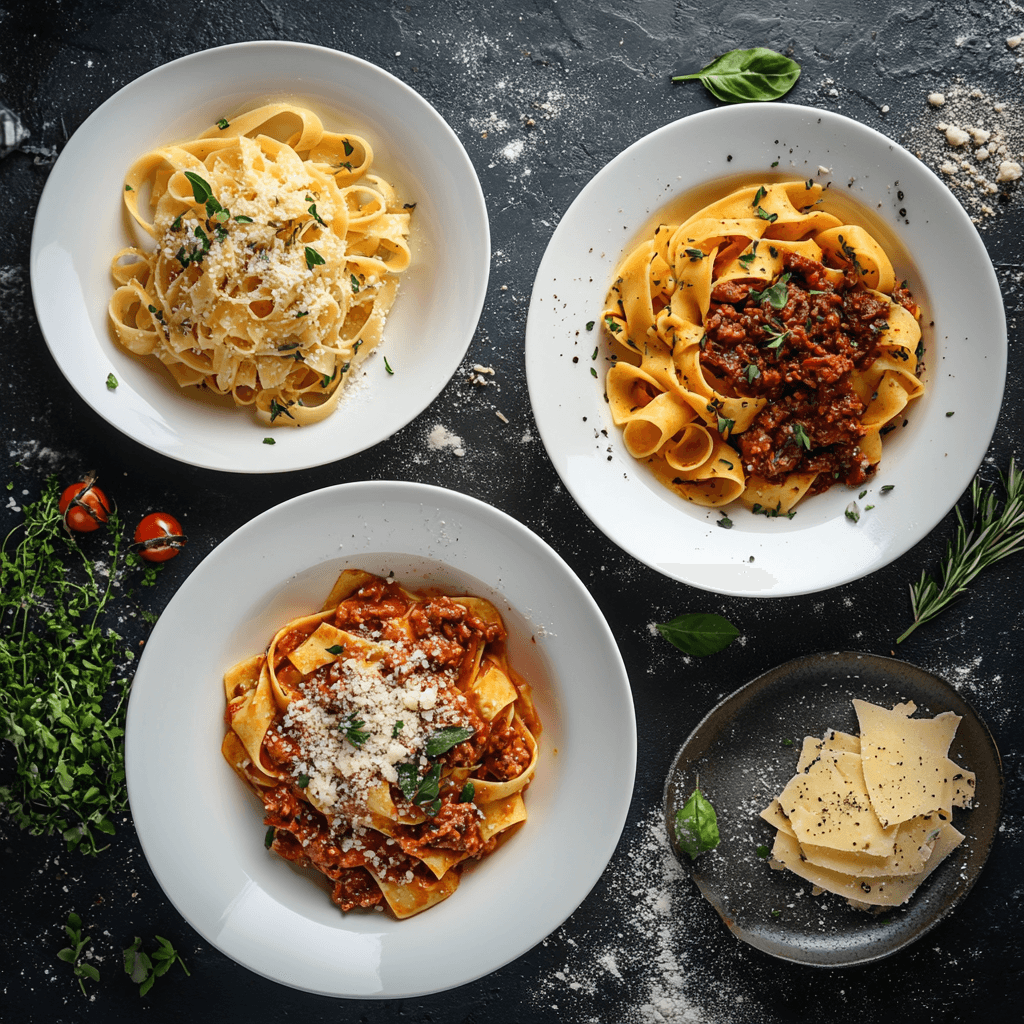I used to think pasta was just pasta until I started studying Gordon Ramsay’s approach to Italian cuisine. What I discovered completely changed how I understand the relationship between technique and flavor. These aren’t just recipes – they’re masterclasses in how small details create extraordinary results.
After analyzing countless hours of Chef Ramsay’s cooking demonstrations and testing his techniques in my own kitchen, I’ve identified the three pasta dishes he returns to repeatedly, each showcasing different fundamental skills that separate amateur cooks from professionals.
Gordon Ramsay’s #1 Favorite: Perfect Carbonara
Carbonara represents everything Gordon Ramsay loves about Italian cooking – it’s technically demanding but uses just five ingredients. His version eliminates the common mistakes that turn this elegant dish into scrambled eggs with pasta.
Ramsay’s Secret Carbonara Technique: The key lies in temperature control and timing. Ramsay creates a double-layer technique where he tempers the egg mixture gradually using hot pasta water before combining with the pasta. This prevents the eggs from scrambling while creating that signature creamy texture without cream.
He emphasizes using guanciale instead of bacon, not for authenticity but for flavor. Guanciale renders more fat and has a deeper, more complex taste that elevates the entire dish. The rendered fat becomes part of the sauce, creating richness that bacon simply can’t match.
The Pasta Water Integration Secret: Ramsay reserves more pasta water for carbonara than any other dish – sometimes up to two cups. He uses it in three stages: first to temper the eggs, then to adjust sauce consistency, and finally to maintain the perfect texture if the dish sits for even a few minutes.
Understanding professional carbonara techniques reveals why temperature control is so crucial. The science behind creating stable emulsions without scrambling eggs requires precise timing and technique.
Signature Dish #2: Cacio e Pepe Perfection
Gordon Ramsay calls cacio e pepe “the ultimate test of a pasta cook’s skill” because it uses only three ingredients: pasta, pecorino romano, and black pepper. With nowhere to hide, every technique must be flawless.
Ramsay’s Cheese Integration Method: His secret involves creating a pecorino paste before adding any pasta water. He combines finely grated pecorino with a small amount of pasta water to create a smooth paste, then gradually adds more water while whisking constantly. This prevents the cheese from clumping and creates that signature creamy consistency.
The Pepper Blooming Technique: Ramsay toasts whole peppercorns in a dry pan before grinding them fresh. This blooming process releases aromatic oils that create much more complex flavor than pre-ground pepper. He adds the pepper to the pan with a small amount of pasta water to create a pepper-infused base.
The Critical Timing Element: Everything happens in the final 30 seconds. The pasta finishes cooking in the pepper-infused water while the cheese paste is added off the heat, creating an emulsion through vigorous tossing rather than heat. This technique prevents the cheese from becoming stringy or clumpy.
Masterpiece #3: Fresh Pappardelle with Slow-Cooked Ragu
This dish showcases Ramsay’s understanding of how fresh pasta and slow-cooked sauces create harmony. His ragu isn’t just meat sauce – it’s a carefully orchestrated symphony of flavors built over hours.
The Ramsay Ragu Foundation: His secret starts with the soffritto – a mixture of finely diced carrots, celery, and onion cooked until they’re almost melting. This creates a sweet, aromatic base that forms the flavor foundation. Many home cooks rush this step, but Ramsay cooks the soffritto for 15-20 minutes until it’s deeply caramelized.
The Meat Selection Strategy: Rather than using ground beef, Ramsay combines different cuts – usually chuck roast and short ribs – that he hand-chops to varying sizes. This creates different textures throughout the sauce and ensures some pieces break down completely while others maintain structure.
The Wine Integration Technique: Ramsay adds wine in two stages: first to deglaze after browning the meat, then again halfway through cooking. This creates layers of wine flavor rather than a single alcohol note. He reduces each addition completely before continuing, concentrating flavors at each stage.
The connection between perfect fresh pasta and slow-cooked sauces demonstrates why understanding basic techniques is so important. Each component must be executed flawlessly for the dish to reach its potential.
The Secret Ingredient Philosophy
When asked about his secret to exceptional pasta, Gordon Ramsay consistently emphasizes that there are no secret ingredients – only secret techniques. His approach focuses on extracting maximum flavor from simple, high-quality ingredients through proper handling and timing.
Quality Over Complexity: Each of these dishes uses fewer than eight ingredients, proving that complexity comes from technique, not ingredient lists. Ramsay’s philosophy is that if you can’t make something delicious with simple ingredients, adding more ingredients won’t help.
Temperature Awareness: Every technique involves precise temperature control. Whether it’s preventing carbonara eggs from scrambling, keeping cacio e pepe from clumping, or maintaining ragu at the perfect simmer, temperature awareness separates good results from great ones.
Timing Synchronization: Professional pasta cooking requires orchestrating multiple elements simultaneously. Ramsay emphasizes that pasta waits for no one – everything else must be ready when the pasta finishes cooking.
Professional resources like Bon Appétit’s pasta techniques demonstrate how these fundamental principles apply across different cooking styles and cuisines.
Advanced Application Techniques
The Sauce-to-Pasta Ratio Mastery: Ramsay uses different pasta shapes strategically. Long pasta like pappardelle for meat sauces that cling to wide surfaces, short pasta like rigatoni for chunky vegetables that nestle inside tubes, and thin pasta like spaghetti for oil-based sauces that coat evenly.
The Garnish Integration Approach: His garnishes aren’t decorative afterthoughts – they’re integral flavor components. Fresh herbs are added at specific moments to preserve their brightness, cheese is grated fresh and added in measured amounts, and finishing oils are chosen to complement specific flavor profiles.
The Leftover Transformation Strategy: Ramsay demonstrates how to transform leftover components into new dishes. Leftover ragu becomes the base for lasagna or stuffed pasta, carbonara technique adapts to create other creamy sauces, and the cacio e pepe method works with different cheeses and seasonings.
These techniques reveal why Gordon Ramsay’s pasta dishes consistently deliver restaurant-quality results. The attention to detail, respect for ingredients, and understanding of fundamental cooking science create dishes that seem simple but require real skill to execute properly.
For home cooks ready to master these techniques, understanding common pasta cooking mistakes provides the foundation needed to execute these more advanced preparations successfully.
The most important lesson from studying these dishes is that excellence in pasta cooking comes from mastering fundamentals, not memorizing complicated recipes. Once you understand the principles behind each technique, you can adapt them to create your own signature dishes.
Stay safe,



